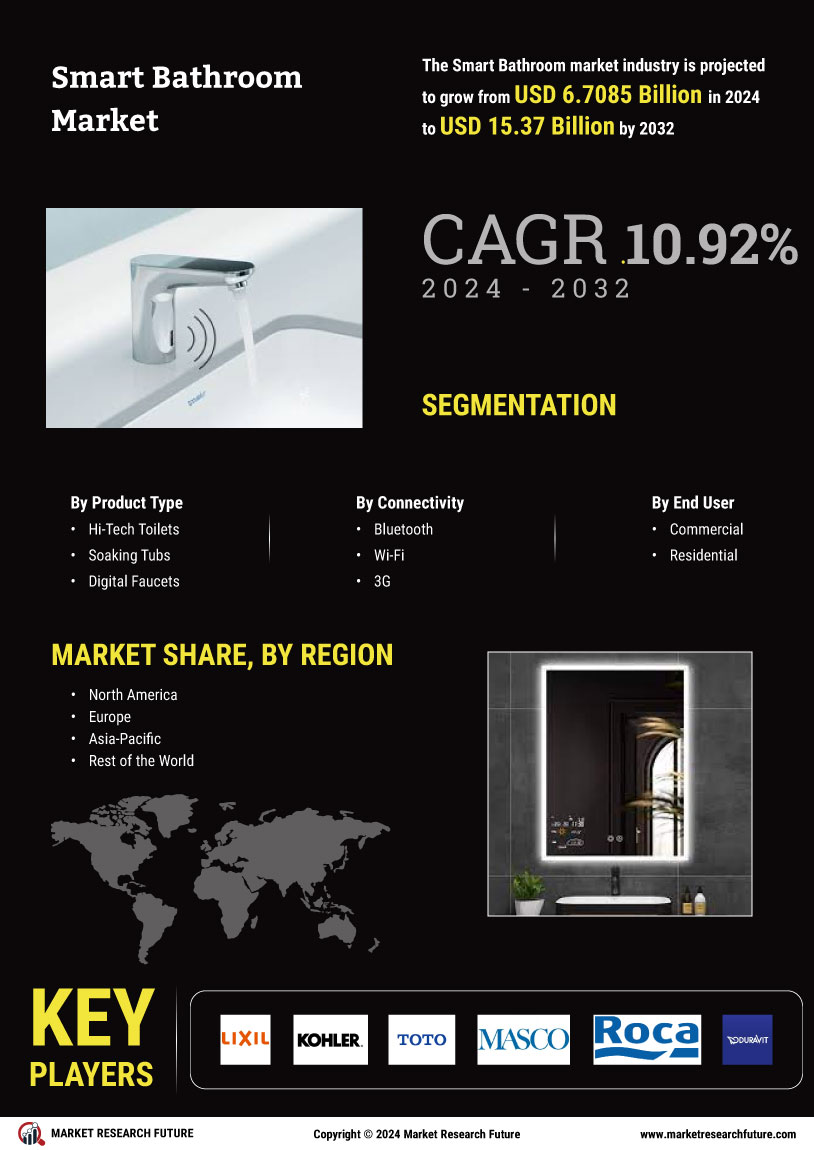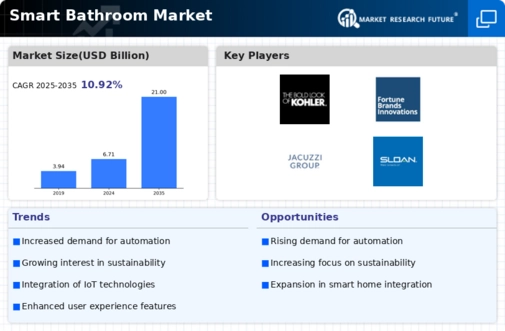Leading market players are investing heavily in research and development in order to expand their product lines, which will help the Smart Bathroom market, grow even more. Market participants are also undertaking a variety of strategic activities to expand their global footprint, with important market developments including new product launches, contractual agreements, mergers and acquisitions, higher investments, and collaboration with other organizations. To expand and survive in a more competitive and rising market climate, Smart Bathroom industry must offer cost-effective items.
Manufacturing locally to minimize operational costs is one of the key business tactics used by manufacturers in the global Smart Bathroom industry to benefit clients and increase the market sector. In recent years, the Smart Bathroom industry has offered some of the most significant advantages to medicine.
Major players in the Smart Bathroom market, including Lixil Group (Japan), Kohler Co. (US), Toto Ltd. (Japan), Masco Corporation (US), Roca Sanitario SA (Spain), Duravit AG (Germany), Fortune Brands (US), Bradley Corporation (US), Cera Sanitaryware Ltd (India), Jacuzzi Inc. (US), Sloan (US), and others, are attempting to increase market demand by investing in research and development operations.
Lixil Group, based in Japan, is a leading company in the smart bathroom market. The business provides a comprehensive range of cutting-edge smart bathroom solutions, utilising cutting-edge technologies to improve usability, sustainability, and convenience. The smart bathroom products offered by Lixil Group include high-tech toilets, digital faucets, shower systems, and smart bathroom fixtures. Lixil Group has won praise for its dedication to developing intelligent and sustainable living spaces because of its strong emphasis on user-centric design and cutting-edge technologies.
The company's smart bathroom solutions incorporate elements like touchless operation, automated flushing, bidet functionality, water-saving capabilities, and connectivity choices like Bluetooth and Wi-Fi. The smart bathroom products from Lixil Group serve both the residential and commercial markets, offering specialised solutions for diverse client requirements. Lixil Group is a major participant in the market for smart bathrooms thanks to its experience creating technologically sophisticated bathroom solutions, significant market presence, and solid brand recognition.
Masco Corporation, based in the United States, is a prominent company operating in the smart bathroom market. The business provides a broad selection of smart bathroom goods and solutions that integrate technology, design, and utility. Masco Corporation offers a variety of smart bathroom solutions, including smart toilets, digital faucets, shower systems, and intelligent bathroom fixtures, with an emphasis on creating new and connected bathroom experiences. Features like touchless operation, water-saving systems, temperature and flow control, and connectivity choices like Bluetooth and Wi-Fi are all included in these items.
The smart bathroom options offered by Masco Corporation, which seek to improve water efficiency, energy conservation, and general environmental responsibility, demonstrate the company's dedication to sustainability. The business has built a solid name in the market for smart bathrooms thanks to its commitment to quality, craftsmanship, and user-friendly designs. Masco Corporation, a market leader, serves both residential and commercial customers, providing specialised solutions to satisfy their various needs. With its broad brand portfolio, which includes household names like Hansgrohe, Liberty Hardware, and Delta Faucet, Masco Corporation has a large position in the smart bathroom industry both domestically and abroad.















Leave a Comment